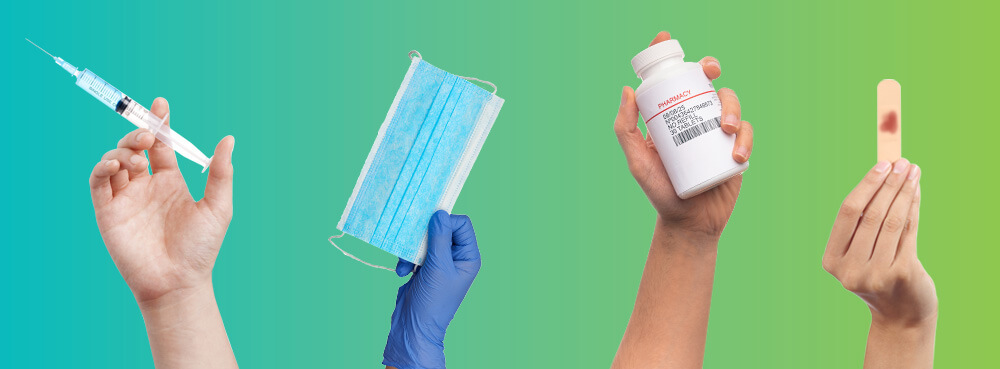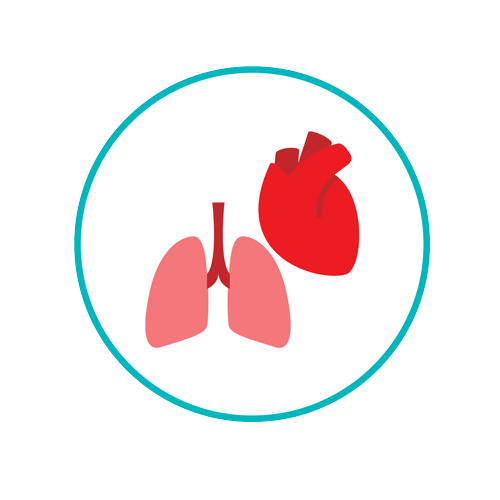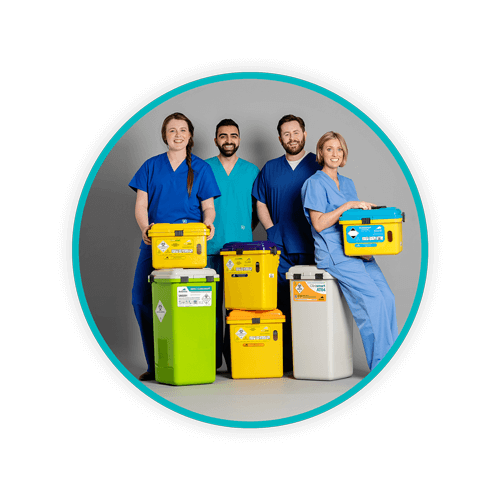Understanding Correct Segregation of Healthcare Waste

Every hospital in the UK must have processes and procedures for the handling, segregation, and disposal of healthcare waste streams. This ensures that healthcare providers, patients, and anyone who handles such waste during the disposal or transportation of waste process is adequately protected.
Segregation is key to the correct disposal of healthcare waste, especially the segregation of infectious from non-infectious waste. The typical approach taken by healthcare facilities segregates based on the type of waste that facility produces. Here's what you need to know to understand correct segregation.
TOPICS WE WILL COVER:
2 / Safe Handling of Healthcare Waste
5 / What do the rules say about sharps?
6 / Guidelines for handling and storage of clinical waste
7 / Sharpsmart knows the rules
What about Duty of Care?
Waste management compliance in healthcare settings focuses not only on human health and protection, but that of the environment as well. Therefore, it is the duty of care that healthcare waste management processes should be developed so that every employee and waste handler has a written management plan for every type of healthcare waste. Compliance oversight of such waste management processes is best assigned to one or more specific staff members who are equipped with adequate and appropriate supplies and equipment.
Safe Handling of Healthcare Waste
Safe handling of healthcare waste means careful assessment of facility handling, collection, and off-site transportation processes of any type of classified waste, including clinical waste, offensive waste, pharma waste and others. Very specific policies and practices have been defined by the Department of Health’s Technical Memorandum 07-01: Safe Management of Healthcare Waste.
The above-mentioned resource provides precise instructions and guidance for storing, removing, and emptying waste containers from different areas of a hospital. Every person who handles that waste must know how to identify and correctly handle that waste. The correct handling of infectious waste is essential for safety.
It is essential to train staff in the compliant and safe handling of sharps. They must be aware that sharps waste should be disposed of appropriately and into the designated sharps containers and not regular waste bins. Another area of focus is the segregation of infectious and non-infectious wastes. Infectious waste must be separated from non-infectious waste at its point of origin using orange bags. Non-infectious offensive waste must be disposed of in the appropriate yellow and black striped bags.
Such waste must be appropriately and safely stored (even temporarily). Appropriate colour-coding and container labelling are important for the protection of anyone who might come into contact with the waste. Identification of waste is a must. Don’t guess. If unsure of the latest in governmental regulations, look to the source (The Health Technical memorandum).
About Clinical Waste

Clinical waste is any waste that can cause infection or disease. This type of waste is typically generated in a hospital, outpatient clinics or centres, or other facilities where any kind of healthcare is provided. However, dental facilities and veterinary services providers and pharmaceutical dispensaries are also included.
A few examples of clinical waste include:
- Human or animal body tissues
- Blood and body fluids
- Syringes and needles – this also includes other ‘sharps’ like scalpels, lancets, pipettes, and so forth (note: sharps waste is considered a form of clinical waste, but must be disposed of separately).
-
Soiled products or items used in patient care scenarios like wound dressings and personal protective equipment (PPE)
Segregation is key
All healthcare waste is defined through categories and classifications. By assessing the type of waste a facility produces, the generator can take the first steps in waste segregation processes which also include storage considerations, labelling responsibilities, and transportation of waste off-site for disposal. A number of questions can be asked to determine what waste management procedures or processes need attention. For example,  questions regarding segregation can include:
questions regarding segregation can include:
- Is it infectious or non-infectious waste?
- Does the waste contain anything medicinal?
-
Does the waste contain a cytotoxic and cytostatic medicine component? (A hazardous medicinal product can have one or more properties: toxic, carcinogenic, toxic for production, and mutagenic)
Training processes must ensure that all employees are knowledgeable in waste stream identification as well as classifications and safe handling procedures.
What do the rules say about sharps?
Healthcare facilities can find guidance regarding such questions through numerous resources, such as:
- Health and Safety (Sharp Instruments in Healthcare) Regulations 2013
- Department of Health Environment and Sustainability Health Technical Memorandum 07-01: Safe Management of Healthcare Waste.
- Safer Needles Network
-
European Biosafety Network
Sharps safety issues such as injury prevention can also be reviewed from Control of Substances Hazardous to Health (COSHH) regulations. It is the duty of employees to notify employers of any type of sharps accident or injury.
In order to reduce the risk of sharps injuries, sharps should be correctly segregated from other healthcare waste streams. Compliant waste receptacles should be used. According to the Health Technical Memorandum, 'sharps receptacles must be UN-type-tested and approved, tested and certified.'
Guidelines for handling and storage of clinical waste
It is important that producers of healthcare waste partner with a waste treatment and disposal facility that adheres to the basic storage, segregation, and handling measures that are defined by the UK government. Below is an outline of the measures that a disposal facility must take:
- On-site bagged waste must be completely enclosed in rigid, leak-proof and weather-proof and lockable bulk containers (such as carts).
- The maximum storage capacity of a site must be clearly established within a designated storage area. You are not allowed to exceed maximum capacities.
- Anatomical waste and/or animal carcasses must be stored in a separate refrigeration unit (below 5°C), unless they are stored on-site for less than 72 hours. You may go beyond the 72 hours if it occurs over a weekend.
- Integrity of waste packaging must be maintained and designed to minimise waste handling
- Clinical waste must be stored based on waste type and its eventual destination.

Sharpsmart knows the rules
Sharpsmart provides solutions for healthcare waste management, storage, and safety processes and procedures. Contact us for guidance for waste reduction, research, and resources for better training and aspects of waste management knowledge within the four walls of your facility. We are dedicated to exceeding sustainability benchmarks and reducing the volume of clinical waste that ends up being treated via high-temperature incineration.
